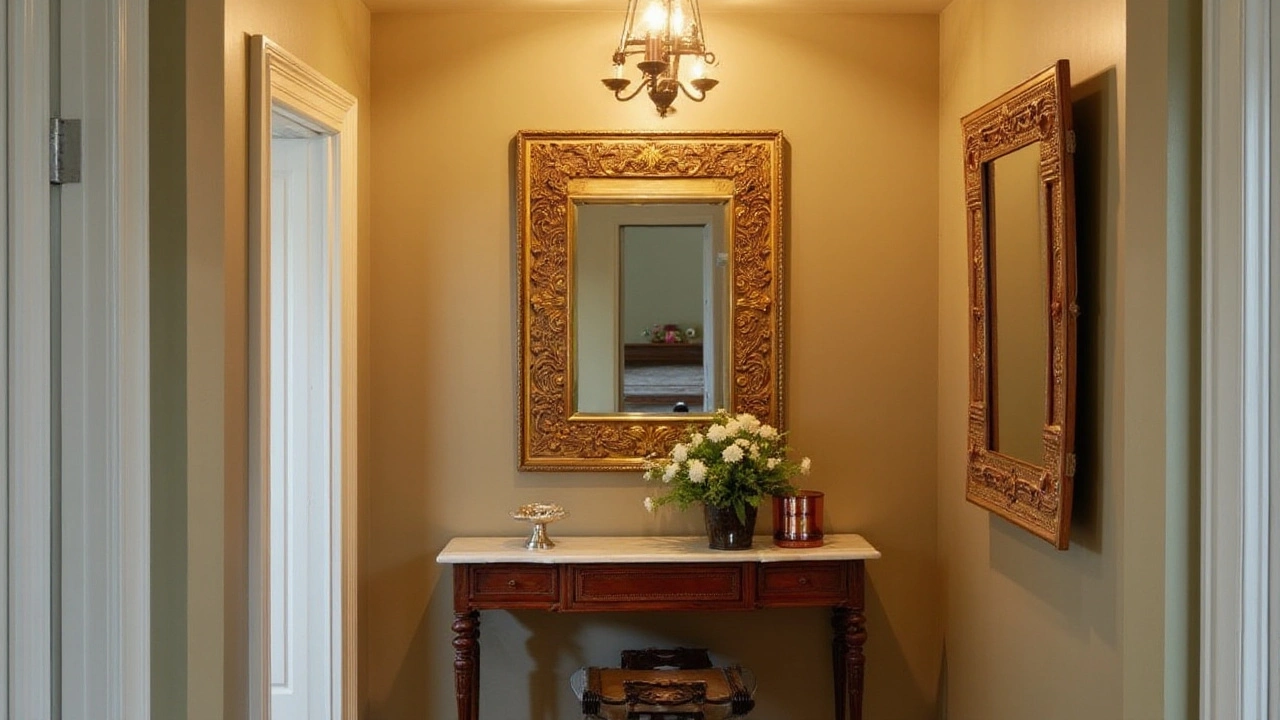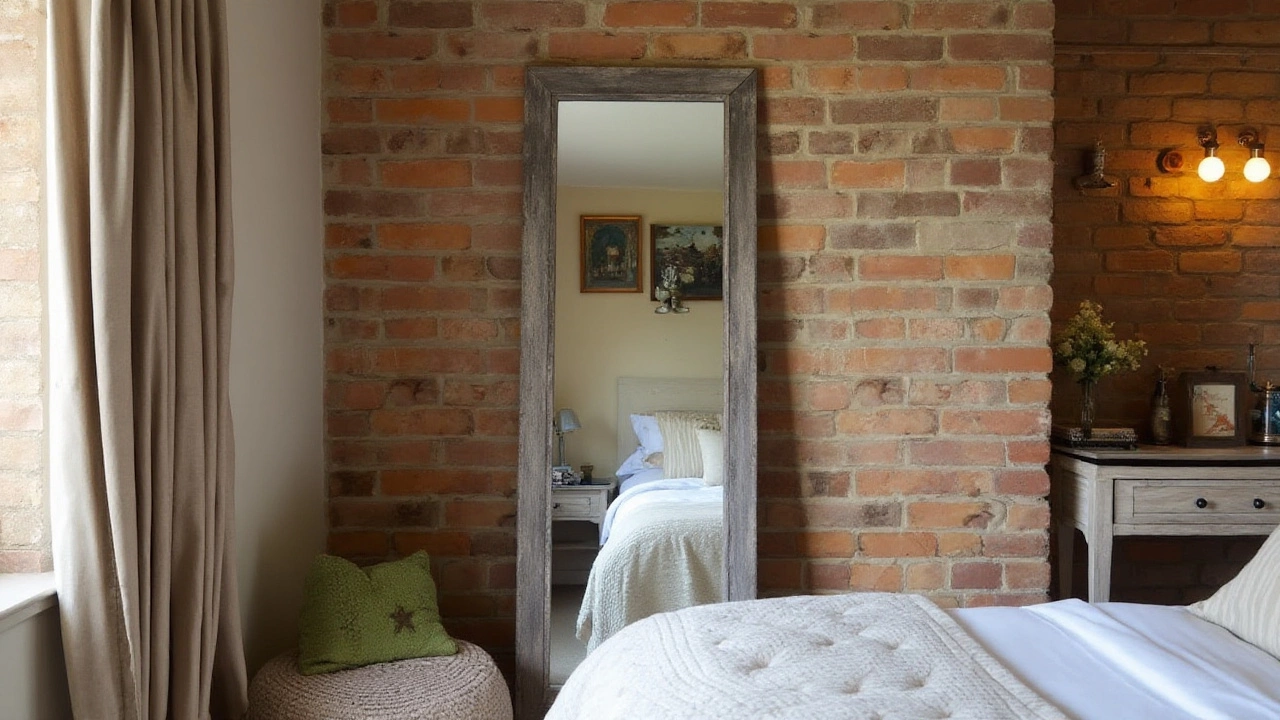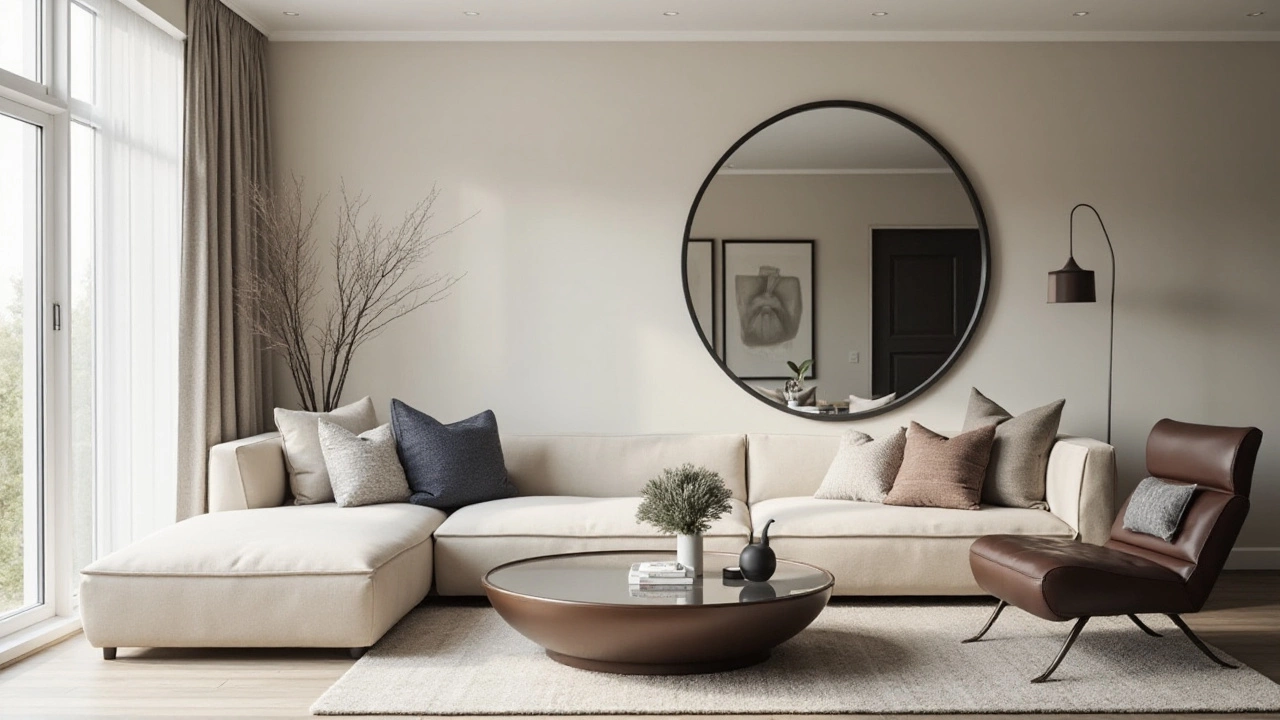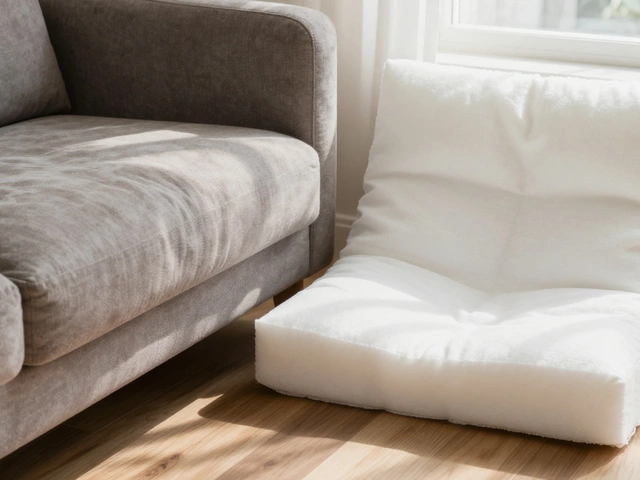In the world of home decor, mirrors are much more than functional objects; they are versatile design elements that can transform any space. Whether you're looking to create an illusion of more space, amplify natural light, or simply find the perfect piece to complete a room, the right mirror can make a world of difference.
As you embark on the journey of selecting the perfect mirror, you'll discover a wide variety of styles and options. From traditional wall mirrors to ornate decorative pieces, understanding your choices will help you make an informed decision. This guide will delve into the types of mirrors, what to consider when buying, and how to maintain them, providing you with all the insight needed to make the best choice for your home.
- Types of Mirrors
- Considerations for Choosing a Mirror
- Mirror Shapes and Sizes
- Decorative Mirrors
- Practical Placement Tips
- Caring for Your Mirror
Types of Mirrors
Mirrors come in various types, each serving unique purposes and adding a distinct touch to your home's decor. Understanding the different types of mirrors can help you select the right one for your space. First, let's talk about wall mirrors, which are probably the most common type you'll encounter. These mirrors are designed to hang on your walls, and they come in various shapes and sizes, from rectangular to oval to even asymmetrical designs. Wall mirrors can make a small room feel larger by reflecting light and creating an illusion of depth.
Another popular option is the floor mirror. Unlike wall mirrors, these large mirrors stand freely on the floor and can be leaned against a wall. They are often full-length, providing a complete reflection, which is ideal for getting dressed or checking your appearance. Floor mirrors add elegance and a modern flair to a room, often found in bedrooms, dressing areas, or hallways. Interestingly, using floor mirrors in small spaces has surged in popularity, with interior designers often recommending them for their ability to open up a room splendidly.
Vanity mirrors are another essential type, especially for those who enjoy a bit of glam. These mirrors typically feature adjustable stands and are made with bright, clean glass that ensures clarity and precision. Vanity mirrors can be simple or ornate, and many come equipped with lights around the frame to mimic professional makeup lighting. They're not only practical for applying makeup or grooming; they also serve as a chic accessory for a dressing room. An interesting tidbit: in a survey conducted by Interior Knack in 2022, nearly 40% of respondents said a lighted vanity mirror was their favorite style of mirror for its enhanced functionality.
Decorative mirrors, often referred to as accent pieces, are smaller, statement mirrors designed to draw attention. Many have intricate or artistic frames and are meant to complement your decor rather than serve a functional purpose. Placing a decorative mirror in an entryway or living room can add charm and character, sometimes even serving as the room's focal point.
Mirrors aren't limited to these categories, with many options designed for specific settings, like bathroom mirrors, which are moisture-resistant, or convex mirrors, used for security and safety purposes. Each type of mirror offers unique benefits, and the world of mirrors is far more expansive than it seems. As Martha Stewart once noted,
"Mirrors create depth and intrigue, adding dimension to even the simplest spaces."
Considerations for Choosing a Mirror
Choosing a mirror might seem straightforward at first glance, but there's an art and science to selecting the perfect one for your home. When you walk into a store or shop online, the sheer range of mirror types and styles can be overwhelming. First, you need to think about the purpose your mirror will serve. Is it purely functional, intended for quick morning checks, or are you aiming for a decorative piece that draws eyes and adds character to a room? The purpose should guide your selection in terms of size, frame, and placement. A decorative mirror, for example, might be larger with a more elaborate frame, whereas a bathroom mirror needs a clear, non-distorting glass surface.
The room's dimensions significantly influence your choice as well. Mirrors can be used to create the illusion of more space. If your room is small, a large mirror can make it appear larger by reflecting more light. The opposite is also true; in a generously-sized room, a small mirror might get lost in the space. Pay attention to natural and artificial light sources too. Mirrors placed opposite a window can reflect outdoor views giving the impression of an additional window, while those reflecting light fixtures can enhance the brightness of an area. But be careful with direct sunlight since it can cause undesirable glare.
Another consideration is the mirror’s frame or the absence of it. Frames can add depth and define a style, from sleek modern lines to detailed vintage designs. A frameless mirror can blend seamlessly into a minimalist space, whereas a thick, ornate frame can serve as a statement piece. Materials used for frames range from classic wood and metal to eclectic options like seashells or reclaimed wood. Don't forget about color coordination with your existing interior when selecting a frame. A harmonious color palette will make for visually appealing décor.
Think about the mirror’s shape as well. Rectangular and square mirrors offer a more traditional feel and provide maximum utility for activities like dressing or applying makeup. Round mirrors, on the other hand, can soften the lines of a room and create a focal point. An unconventional, asymmetrical mirror could serve as a piece of art that doubles as practical décor. If you're unsure, consider using painter's tape to outline proposed mirror shapes on your wall to visualize the impact.
Finally, consider your budget. While some mirrors come at a premium due to designer labels or rare materials, there are plenty of affordable options that do not compromise on style and quality. Sometimes, a simple IKEA mirror can fit just as well if accentuated with the right lighting or alongside complementary furniture pieces. Remember, the best mirror fits both your aesthetic desires and your practical needs, enhancing the space it inhabits.
"Mirrors are more than just functional objects. They reflect the mood of a room and the soul of its inhabitants." - [A Well-regarded Designer]
When you take the time to contemplate these factors, your choice becomes much more than a quick decision. You're including something that reflects both light and personal taste, turning everyday utility into an integral part of your home's story. It's not just about what a mirror shows you, but how it fits into the narrative of your living space.

Mirror Shapes and Sizes
Choosing the right shape and size of a mirror is like finding the perfect frame for a work of art; it can truly define the style and functionality of a room. A well-chosen mirror not only reflects visually but can also balance a room's proportions, adding depth and dimension to compact spaces or bringing cohesion to expansive areas. When it comes to mirror types, there are mainly geometric shapes like rectangles, squares, circles, and ovals, each offering a different aesthetic appeal. Rectangular and square mirrors give a structured look suited for contemporary designs, while circular and oval mirrors tend to soften spaces and blend well with chic and bohemian styles.
The size of the mirror is equally important. A mirror that is too large can overwhelm a space, while one that is too small may appear insignificant. Ideally, a mirror should be large enough to reflect light and create an illusion of space, but also proportionate to the wall or furniture it accompanies. For instance, a hallway might benefit from a tall, narrow mirror, providing a pleasing symmetry and covering more vertical space. In contrast, a large rectangular wall mirror behind a sofa or over a mantelpiece can add grandeur.
Ingenuity plays a part in deciding whether a mirror should be of decorative or utility nature. Decorative mirrors often come in intricate and artistic shapes. Think sunburst patterns, multi-panel mirrors, or even abstract designs that double as art pieces. These are not just home mirrors but also statements that reflect the homeowner's personal style. For functionality, floor mirrors are practical, especially in dressing rooms, displaying full-body reflections that are ideal for outfit checks.
| Shape | Best Use |
|---|---|
| Rectangle | Enhancing width in rooms; above furniture |
| Circle | Soften rigid lines; create a focal point |
| Square | Classic, versatile decor; offers balance |
| Oval | Adds elegance; fits narrow walls |
According to design expert Emily Henderson, “Mirrors are one of the simplest décor enhancements you can make with the biggest visual impact, especially in small spaces.”
“A strategically placed mirror can enlarge a space and multiply light in ways few other decorations can,” Emily notes.Her insights reflect the notion that mirrors should not merely blend in but rather enhance and magnify the beauty of a room.
Decorative Mirrors
Decorative mirrors are more than just reflective surfaces; they are statements that can elevate any room's design and set a mood. With an array of styles ranging from rustic to modern, a decorative mirror has the power to enhance your home's character dramatically. Such mirrors may not always serve a practical purpose unless you count the art of aesthetic satisfaction, but they can stimulate conversation, capture the light beautifully, and serve as a focal point or complement to a specific theme. The art of choosing a decorative mirror involves understanding your personal style and the way you want the mirror to interact with your environment.
From intricate baroque framings reminiscent of the palatial elegance of Versailles to sleek, minimalistic frameless designs that appeal to the modern minimalist, the diversity in mirror types allows for endless creativity. A popular trend is the use of large decorative mirrors in modest-sized rooms. A well-placed mirror can reflect light and make a compact space feel expansive and welcoming, lending a sense of breathing room that enhances comfort. Wall mirrors with unique frames can also layer texture and depth onto blank walls, transforming them into striking features.
When considering a decorative mirror, it’s important to think about not just the style but placement as well. Place it where it balances the room, possibly opposite a window to maximize the reflective light or above a fireplace to draw the eye upwards. This placement can play with perceptions, creating an illusion of larger space and airiness. Remember, you want the mirror to reflect something beautiful or meaningful, whether that's a piece of artwork, a stunning view, or a captivating chandelier.
The New York Times noted, "A well-placed mirror has the ability to enhance light, create depth, and even dress a wall like an exquisite piece of art." Finding that perfect harmony of art and function is part of what makes decorating with mirrors such an exciting endeavor.
A useful tip is experimenting with arrangements. Clusters of small mirrors can be an eye-catching alternative to a single large mirror and allow flexibility of design. This arrangement creates a dynamic focal point, capable of adapting as your style evolves over time. Just remember that when it comes to clusters, staying cohesive in style is key to avoid a mismatched look. An all-gold frame collection, for example, provides cohesiveness while offering variety in shape and size.
Of course, maintaining your mirrors isn't just about dusting and polishing. The longevity and effectiveness of decorative mirrors in enhancing your home can be influenced by where and how you place them. Avoid placing directly in the path of too much direct sunlight as prolonged exposure may cause discoloration. Always use appropriate mounting hardware to prevent accidental damages.

Practical Placement Tips
Mirrors are more than mere wall hangings; they are powerful tools for transforming space, creating depth, and enhancing the light in any room. Knowing where to place your mirror can greatly impact the overall ambiance of a space. One important consideration is who will use the mirror and for what purpose. In a living room or hallway, for example, a medium-sized mirror placed strategically can reflect natural light and open up the room. This gives an impression of a much larger space without any structural changes.
Placing mirrors opposite windows is a smart move because it capitalizes on available light. During the day, a mirror in such a location can significantly brighten a room, creating a cheerful atmosphere. Reflective surfaces can double the appeal of your interior design by projecting not just light but also the view, whether it's a garden, skyline, or an intricately patterned curtain. This dual benefit makes the reflective strategy perfect for interior spaces that lack vibrancy or are initially dim-lit. However, care should be taken as not to overexpose certain areas of the room which could lead to unwanted glare.
"A strategically placed mirror can enlarge even the smallest of spaces," says interior designer Sophie Ashby. "It's like adding a window without the hassle of a renovation."
It's important to match the mirror's style with that of your existing decor to achieve a harmonious look. A decorative mirror with ornate frames can serve as a focal point over a mantelpiece; it attracts attention and adds a touch of luxury. Conversely, a simple, frameless mirror might be more suitable for minimalistic styles, such as in a modern bathroom or a compact hallway. When hanging mirrors, consider safety as well. Ensure that they are fastened securely to the wall, especially if they are placed in high-traffic areas or above furniture.
Layering for Effect
One creative strategy is layering mirrors to add depth to a wall. For example, you might use a large mirror as a backdrop with smaller design-type mirrors in its foreground. This method not only adds an intricate design element to a room but also creates a sense of dimension and complexity. In essence, it turns a bland wall into a gallery showcasing mirrors of various shapes and frames that complement one another.
In the dining area, a mirror can enhance the dining experience by creating a more spacious and elegant ambiance. By reflecting the walls adorned with art or by catching the warm glow of candlelight, the mirror serves as a decorative element that makes the dining room feel more inviting. Mirrors with interesting geometric shapes can serve the same purpose in kitchens, offering an unexpected design twist that's both functional and stylish.
Mirrors are more than accessories—they are essential design components that have the power to redefine your space. Whether you're looking to alter the perception of room size, add an elegant touch, or just make use of reflective light, the ideal mirror and its thoughtful placement can achieve these goals. Lastly, always be mindful of personal preference and the overall aesthetic you're aiming for as you decide on the right mirror placement.
Caring for Your Mirror
Mirrors are an excellent addition to any home, providing both aesthetic appeal and practical functionality. However, keeping your mirrors looking their best requires regular care and attention. First, dust your mirror surface frequently with a microfiber cloth to prevent the buildup of dust and grime. This step is crucial because preventing dust accumulation can significantly reduce scratches when cleaning. Using household cleaners with ammonia or acidic substances can damage the reflective coating over time, so opt for a gentle glass cleaner or a mixture of equal parts water and vinegar. Remember to spray the cleaner onto the cloth rather than directly on the mirror to avoid seepage into the frame, which can lead to damage.
When it comes to eliminating smudges and fingerprints, using a clean, dry microfiber cloth again is your best bet. Gently wipe the spots in small, circular motions for best results. For tougher stains, a lightly dampened cloth can aid in cleaning, but always follow up by drying the area to prevent streaks. Pay attention to the frame, too, as it requires specific care depending on the material. Wooden frames benefit from regular dusting and occasional polishing, while metal frames might need special polish to prevent tarnishing.
"A mirror is like a pet; it needs care, attention, and occasional pampering to shine," notes renowned interior designer Jane Bennett.
Another important aspect of maintaining home mirrors is proper placement to avoid preventable damage. Avoid placing mirrors where they will be exposed to direct sunlight for long periods, as continuous exposure can cause the reflective coating to deteriorate and fade over time. If possible, hang mirrors or position them so they're not subject to drastic temperature changes as this can cause frame warping and mirror cracking. Whenever you're moving or adjusting your mirrors, handle them with care and always secure them properly to protect against accidental falls and shattering.
Quick Repair Tips
Life happens, and mirrors may occasionally sustain minor scratches or blemishes. While some damage may be beyond home repair, smaller scratches might be fixed with common household solutions. Try rubbing the scratch gently with toothpaste or a mixture of baking soda and water, using a cotton cloth to apply these materials sparingly. Keep expectations realistic since these methods work only on superficial scratches and may not provide a perfect fix.Ultimately, regular maintenance and attentive care will ensure your decorative mirrors remain in excellent condition, enhancing their elegance and functionality. By taking the time to clean and properly place your mirrors, you not only extend their life but also maintain the beauty of your living space. Remember, mirrors reflect a part of your home and your personality; let them shine with the same brilliance you wish to reflect in your daily life.







